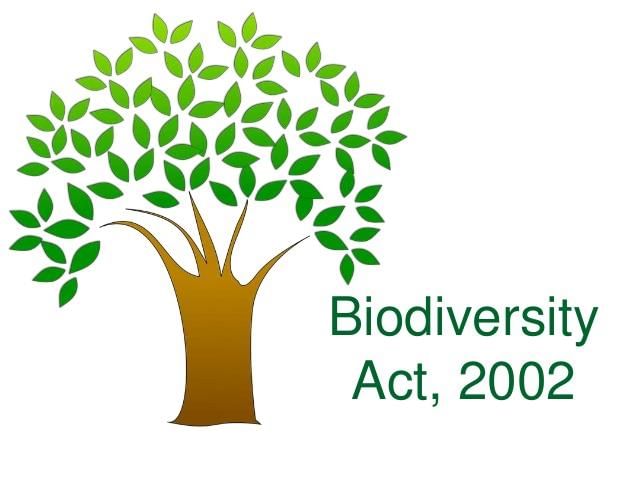Other Core Acts | Environmental Law - CLAT PG PDF Download
Water (Prevention and Control of Pollution) Act, 1974

Background
- Enacted in response to growing water pollution due to industrialization, urbanization, and untreated sewage.
- India’s first comprehensive law to address environmental pollution.
- Passed under Article 252 of the Constitution, as water is a state subject, requiring states’ consent.
Objectives
- Prevent and control water pollution.
- Maintain or restore the wholesomeness of water bodies (rivers, lakes, groundwater).
- Establish regulatory bodies to enforce pollution control measures.
Key Provisions
Establishment of Pollution Control Boards:
- Central Pollution Control Board (CPCB): Formed under Section 3, it advises the Central Government, sets standards, and coordinates with SPCBs.
- State Pollution Control Boards (SPCBs): Formed under Section 4, they implement the Act at the state level, monitor pollution, and enforce regulations.
Consent Mechanism (Sections 25-26):
- Industries, local bodies, or establishments discharging sewage or trade effluents must obtain Consent to Establish (CTE) and Consent to Operate (CTO) from SPCBs.
- Applications must include details of waste treatment plans.
Prohibition on Pollution (Section 24):
- No person can knowingly cause or permit the discharge of poisonous, noxious, or polluting matter into water bodies beyond prescribed standards.
Monitoring and Inspection (Sections 20-21):
- Boards can inspect premises, collect samples, and analyze effluents to ensure compliance.
- Industries must provide access and information to inspectors.
Penalties (Sections 41-44):
- Violators face imprisonment (1.5 to 6 years) and/or fines.
- Repeated offenses can lead to closure of the polluting unit.
- Non-compliance with board orders is punishable.
Public Participation:
- Citizens can file complaints with courts after giving 60 days’ notice to SPCBs (Section 49).
Authorities
- CPCB: Sets national standards, conducts research, and guides SPCBs.
- SPCBs: Issue consents, monitor compliance, and take legal action against polluters.
- State Governments: Appoint SPCB members and declare water pollution control areas.
Landmark Case Laws
MC Mehta v. Union of India (1987) (Ganga Pollution Case):
The Supreme Court ordered tanneries in Kanpur to stop discharging untreated effluents into the Ganga and emphasized the need for pollution control measures.
Vellore Citizens’ Welfare Forum v. Union of India (1996):
The Court introduced the Precautionary Principle and Polluter Pays Principle, directing tanneries in Tamil Nadu to treat effluents or shut down.
Significance
- Laid the foundation for environmental regulation in India.
- Protects water resources critical for drinking, agriculture, and aquatic ecosystems.
- Empowers regulatory bodies to enforce compliance and penalize polluters.
- Aligns with India’s international commitments, such as the Stockholm Declaration (1972).
Air (Prevention and Control of Pollution) Act, 1981

Background
- Enacted to address rising air pollution from industries, vehicles, and urbanization.
- Influenced by India’s participation in the 1972 UN Conference on the Human Environment.
- Passed under Article 253 to implement international obligations.
Objectives
- Prevent, control, and abate air pollution.
- Maintain air quality for public health and environmental sustainability.
- Establish regulatory mechanisms to monitor and reduce emissions.
Key Provisions
Pollution Control Boards (Sections 3-5):
- CPCB and SPCBs (established under the Water Act) are tasked with implementing the Air Act.
- CPCB sets National Ambient Air Quality Standards (NAAQS); SPCBs enforce them.
Consent Requirement (Sections 21-22):
- Industries emitting pollutants (e.g., smoke, gases) must obtain CTE and CTO from SPCBs.
- SPCBs can impose conditions, such as installing pollution control equipment.
Air Pollution Control Areas (Section 19):
- State governments can declare specific areas as “air pollution control areas” and ban certain polluting activities (e.g., burning of specific fuels).
Emission Standards (Section 22):
- Industries and vehicles must adhere to emission limits set by CPCB/SPCBs.
- Non-compliance can lead to closure or operational restrictions.
Monitoring and Inspection (Sections 23-24):
- Boards can inspect industries, test emissions, and issue directions to reduce pollution.
Penalties (Sections 37-39):
- Violators face imprisonment (1.5 to 6 years) and/or fines.
- Failure to comply with board orders can lead to additional penalties.
Public Complaints (Section 43):
- Citizens can approach courts after giving 60 days’ notice to SPCBs.
Authorities
- CPCB: Sets air quality standards, conducts research, and advises the government.
- SPCBs: Issue consents, monitor emissions, and enforce compliance.
- State Governments: Declare control areas and support SPCBs.
Landmark Case Laws
MC Mehta v. Union of India (1986) (Delhi Air Pollution Case):
- The Supreme Court ordered industries in Delhi to switch to cleaner fuels and relocate polluting units.
Subhash Kumar v. State of Bihar (1991):
The Court recognized the right to a pollution-free environment as part of Article 21 (Right to Life).
Significance
- Addresses public health issues caused by air pollution (e.g., respiratory diseases).
- Regulates emissions from industries and vehicles, promoting cleaner technologies.
- Supports India’s commitments under global agreements like the Paris Agreement.
Forest (Conservation) Act, 1980

Background
- Enacted to curb rapid deforestation due to industrial projects, agriculture, and infrastructure.
- Aimed to conserve forests as critical ecosystems for biodiversity and climate regulation.
- Amended in 1988 to strengthen provisions.
Objectives
- Conserve forests and prevent their diversion for non-forest purposes.
- Regulate the use of forest land for development projects.
- Promote afforestation to compensate for forest loss.
Key Provisions
Restriction on De-reservation (Section 2):
- State governments cannot de-reserve forest land or allow its use for non-forest purposes (e.g., mining, dams, industries) without prior approval from the Central Government.
- Non-forest purposes include any activity not related to forest management or conservation.
Compensatory Afforestation:
- If forest land is diverted, the user agency must provide equivalent non-forest land for afforestation and bear the cost of planting trees.
- Funds are managed through the Compensatory Afforestation Fund (CAF).
Advisory Committee (Section 3):
- The Central Government may constitute a committee to advise on forest land diversion cases.
Penalties (Section 3A):
- Violating the Act (e.g., unauthorized felling of trees) can lead to imprisonment (up to 15 days) and/or fines.
Applicability:
Applies to all forest lands, whether officially notified as forests or recorded as forests in government records.
Authorities
- Central Government: Approves or rejects proposals for forest land diversion.
- State Governments: Submit proposals for diversion and implement afforestation plans.
- Forest Advisory Committee (FAC): Advises the Central Government on diversion cases.
Landmark Case Laws
TN Godavarman Thirumulpad v. Union of India (1997):
The Supreme Court defined “forest” to include any land with tree cover, regardless of legal status, and halted non-forest activities without approval.
Samatha v. State of Andhra Pradesh (1997):
The Court restricted mining in forest areas to protect tribal rights and forests.
Significance
- Protects India’s forest cover, vital for biodiversity, carbon sequestration, and tribal livelihoods.
- Balances development with conservation through compensatory afforestation.
- Strengthens oversight of projects impacting forests, ensuring environmental sustainability.
Wildlife Protection Act, 1972

Background
- Enacted to address declining wildlife populations due to hunting, poaching, and habitat loss.
- Influenced by India’s commitment to the 1971 Ramsar Convention and other global treaties.
- Amended multiple times (e.g., 2002, 2006) to strengthen protections.
Objectives
- Protect wild animals, birds, and plants from extinction.
- Regulate hunting, poaching, and trade in wildlife.
- Establish protected areas to conserve habitats.
Key Provisions
Schedules of Species (Sections 2, 9-11):
The Act lists species in six schedules with varying protection levels:
- Schedule I: Highest protection (e.g., tiger, elephant); hunting is completely banned.
- Schedule II: High protection (e.g., deer, bear).
- Schedules III-IV: Lesser protection but regulated.
- Schedule V: Vermin (e.g., rats, crows) with minimal protection.
- Schedule VI: Protected plants.
Protected Areas (Sections 18-35):
- Provides for declaring National Parks, Wildlife Sanctuaries, Conservation Reserves, and Community Reserves.
- National Parks have stricter restrictions than sanctuaries (e.g., no grazing allowed).
Hunting Restrictions (Section 9):
Hunting of Schedule I-IV species is prohibited, except in cases of self-defense, scientific research, or special permission.
Trade Regulation (Sections 39-49):
- Trade in wildlife, trophies, or derivatives (e.g., ivory, skins) is banned or strictly regulated.
- Licenses are required for dealing in Schedule III-IV species.
Wildlife Authorities (Sections 3-6):
- Chief Wildlife Warden: Appointed by state governments to enforce the Act.
- National Board for Wildlife (NBWL): Chaired by the Prime Minister, it advises on wildlife conservation.
- State Board for Wildlife (SBWL): Advises state governments.
Penalties (Sections 51-58):
- Offenses involving Schedule I or II species: Imprisonment (3-7 years) and fines (minimum ₹10,000).
- Other violations: Imprisonment (up to 3 years) and/or fines.
Public Participation (Section 55):
Citizens can file complaints after giving notice to authorities.
Authorities
- Chief Wildlife Warden: Enforces the Act at the state level.
- NBWL and SBWL: Provide policy guidance and approve projects in protected areas.
- Wildlife Crime Control Bureau (WCCB): Coordinates efforts to combat wildlife trafficking.
Landmark Case Laws
Animal Welfare Board of India v. A. Nagaraja (2014) (Jallikattu Case):
The Supreme Court banned Jallikattu, citing cruelty to bulls under the Act.
Centre for Environmental Law v. Union of India (2013):
The Court emphasized protecting endangered species like the Great Indian Bustard.
Significance
- Protects India’s rich biodiversity, including iconic species like tigers and rhinos.
- Supports conservation through protected areas like Project Tiger and Project Elephant.
- Combats illegal wildlife trade, a major global issue.
- Empowers communities through community reserves.
Biodiversity Act, 2002

Background
- Enacted to implement India’s obligations under the Convention on Biological Diversity (1992).
- Addresses threats to biodiversity from overexploitation, habitat loss, and commercialization.
- Focuses on protecting traditional knowledge and ensuring equitable benefit-sharing.
Objectives
- Conserve biological diversity (plants, animals, microorganisms).
- Promote sustainable use of biological resources.
- Ensure fair and equitable sharing of benefits from biodiversity with local communities.
Key Provisions
Authorities (Sections 3-7):
- National Biodiversity Authority (NBA): Established in Chennai, it regulates access to biological resources and approves research/commercial use.
- State Biodiversity Boards (SBBs): Implement the Act at the state level and advise on conservation.
- Biodiversity Management Committees (BMCs): Set up by local bodies (panchayats, municipalities) to document biodiversity and protect local resources.
Access and Benefit Sharing (ABS) (Sections 3, 6, 21):
- Foreigners, NRIs, or companies accessing biological resources or associated knowledge need NBA approval.
- Indian entities need to notify SBBs for commercial use.
- Benefits (e.g., royalties, technology transfer) must be shared with local communities or BMCs.
Protection of Traditional Knowledge (Section 36):
- The Act safeguards indigenous knowledge about biodiversity (e.g., medicinal plants).
- People’s Biodiversity Registers (PBRs) document traditional knowledge under BMCs.
Biodiversity Heritage Sites (Section 37):
States can declare areas rich in biodiversity as heritage sites for special protection.
Penalties (Sections 55-58):
- Unauthorized access or violation: Imprisonment (up to 5 years) and/or fines (up to ₹10 lakh).
- Non-compliance by companies can lead to penalties for directors.
Authorities
- NBA: Approves access, monitors compliance, and promotes research.
- SBBs: Coordinate with BMCs and regulate state-level activities.
- BMCs: Document biodiversity, protect local resources, and facilitate ABS.
Landmark Case Laws
NBA v. Divya Pharmacy (2018):
The Uttarakhand High Court ruled that Indian companies must comply with ABS provisions for using biological resources.
Environment Support Group v. NBA (2013):
The case highlighted the need for transparency in NBA’s approval processes.
Significance
- Protects India’s biodiversity, one of the world’s richest, with 8% of global species.
- Empowers local communities by recognizing their role in conservation.
- Prevents biopiracy by regulating access to biological resources and knowledge.
- Aligns with global biodiversity goals and sustainable development.
Public Liability Insurance Act, 1991

Background
- Enacted after the 1984 Bhopal Gas Tragedy to ensure quick relief to victims of industrial accidents.
- Focuses on industries handling hazardous substances listed under the Environment (Protection) Act, 1986.
- Aims to reduce financial and legal burdens on victims.
Objectives
- Provide immediate relief to victims of accidents involving hazardous substances.
- Ensure industries are financially accountable for environmental and human harm.
- Promote safety standards in hazardous industries.
Key Provisions
Mandatory Insurance (Section 4):
- Industries handling hazardous substances (e.g., chemicals, gases) must take insurance policies to cover liabilities for accidents.
- Insurance must cover death, injury, or property damage to workers and the public.
No-Fault Liability (Section 3):
- Victims are entitled to compensation without proving the industry’s negligence.
- Compensation is based on a fixed schedule (e.g., ₹25,000 for death, ₹12,500 for permanent disability).
Environment Relief Fund (ERF) (Section 7A):
- Industries contribute to a central fund to provide additional relief to victims.
- Managed by the Central Government or designated authorities.
Application for Relief (Section 6):
- Victims or their representatives can apply to the Collector (district authority) for compensation.
- The Collector verifies claims and disburses relief.
Penalties (Section 14):
- Failure to take insurance or comply with the Act: Imprisonment (1.5 to 6 years) and/or fines.
- Non-payment of ERF contributions is punishable.
Exemptions:
The Act does not apply to accidents caused by war, nuclear substances, or natural disasters.
Authorities
- Collector: Receives and processes claims for compensation.
- Central Government: Manages the ERF and oversees implementation.
- Insurance Companies: Provide liability coverage to industries.
Landmark Case Laws
MC Mehta v. Union of India (1987) (Oleum Gas Leak Case):
The Supreme Court introduced the Absolute Liability Principle, holding industries handling hazardous substances fully liable for harm, strengthening the Act’s framework.
Bhopal Gas Tragedy Case (1989):
The settlement led to the Act’s enactment to prevent delays in compensating victims.
Significance
- Ensures swift financial relief to victims of industrial accidents.
- Promotes accountability and safety in hazardous industries.
- Reduces the burden on courts by providing a no-fault compensation mechanism.
- Protects workers and communities living near hazardous facilities.
Conclusion
These environmental laws form the backbone of India’s efforts to protect its natural resources, biodiversity, and public health. For CLAT PG, focus on understanding the legal framework, key provisions, and their practical implications. Combine these notes with case law analysis and practice questions to score well in the exam.
|
39 docs|15 tests
|
FAQs on Other Core Acts - Environmental Law - CLAT PG
| 1. What are the main objectives of the Water (Prevention and Control of Pollution) Act, 1974? |  |
| 2. How does the Air (Prevention and Control of Pollution) Act, 1981, contribute to air quality management? |  |
| 3. What is the significance of the Forest (Conservation) Act, 1980, in environmental protection? |  |
| 4. What provisions does the Wildlife Protection Act, 1972, include for the conservation of wildlife? |  |
| 5. How does the Biodiversity Act, 2002, promote the conservation of biological diversity? |  |





















